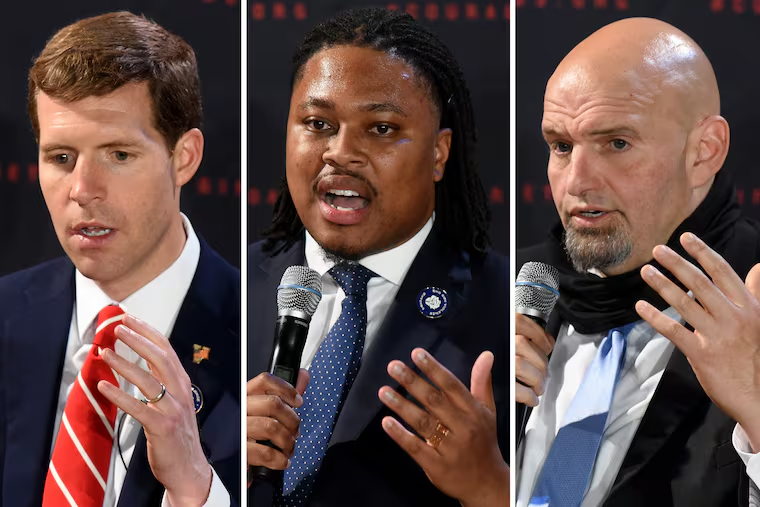John Fetterman still has a huge cash advantage in the Pa. Senate race, even after Conor Lamb’s best quarter
Fetterman’s financial edge is a huge obstacle to rivals trying to catch him in the final month of Pennsylvania's Democratic Senate primary.

A turbulent few weeks and hard-hitting attacks have done little to change one of the persistent realities of Pennsylvania’s Democratic primary for U.S. Senate: John Fetterman has a crucial money lead.
The lieutenant governor has more than three times as much money as U.S. Rep. Conor Lamb for the final month of the primary, according to an Inquirer analysis of campaign disclosures filed Friday, a key factor since polls already show Fetterman far ahead.
The financial edge is even larger than it first looks on paper, despite Lamb reporting his best fund-raising quarter so far. That’s because a significant chunk of Lamb’s campaign funds can only be used in November’s general election, not the May primary.
Even considering the super PAC backing Lamb, Fetterman has more than twice as much to spend than Lamb and his allies — despite already outspending them both.
Democrats watching the primary believe Fetterman’s cash advantage is a huge obstacle for Lamb and State Rep. Malcolm Kenyatta, in that they need to both increase their own support and drag down Fetterman, an expensive proposition in a state where campaigns rely heavily on TV advertising.
Fetterman had $4.2 million in the bank as of March 31, compared with Lamb’s $2.2 million. But looking only at money available for the primary, Fetterman has $3.9 million to about $1.2 million for Lamb, according to the Inquirer analysis.
That’s because $970,000 of Lamb’s fund is designated for the general election, reflecting his reliance on big donors whose contributions often exceed the $2,900 limit that can be used in the primary. The rest gets rolled into his general election fund.
Fetterman raised $3.1 million in the first three months of the year and spent $4.3 million as the campaign took on new intensity. As usual, Fetterman has relied on small donors, with more than half of his receipts in this report coming from people who gave less than $200.
Lamb raised $1.74 million in the same time frame, his best quarter yet, and spent about $2.5 million. More than 80% of his funds came from donors who gave more than $200.
Kenyatta continued to struggle raising money, despite polling better than many predicted. He raised $306,000 and had $271,000 left for the primary’s final weeks.
Penn Progress Inc., a super PAC supporting Lamb, helped narrow the spending gap against Fetterman by chipping in $1.1 million on Lamb’s behalf, and had $833,000 left in the bank.
The group had promoted an ambitious goal of raising $8 million. It has fallen well short so far, raising just $1.9 million.
About 40% of that came from Pennsylvania donors, with most of the remainder coming from Massachusetts, California, Connecticut, and New York.
Among the 51 donors to the PAC were Constance Hess Williams, a former state senator from Montgomery County; Joshua Bekenstein, CEO of Bain Capital; and Thomas B. Hagen, who heads Erie Insurance. All three gave $250,000 each.